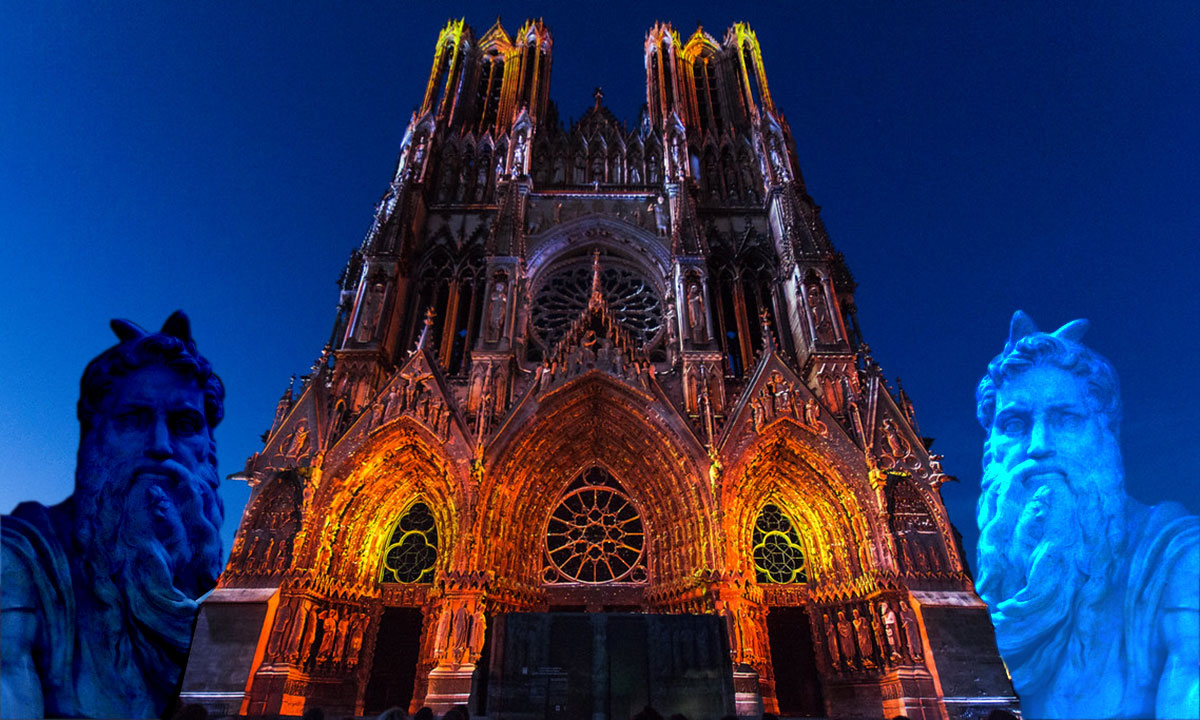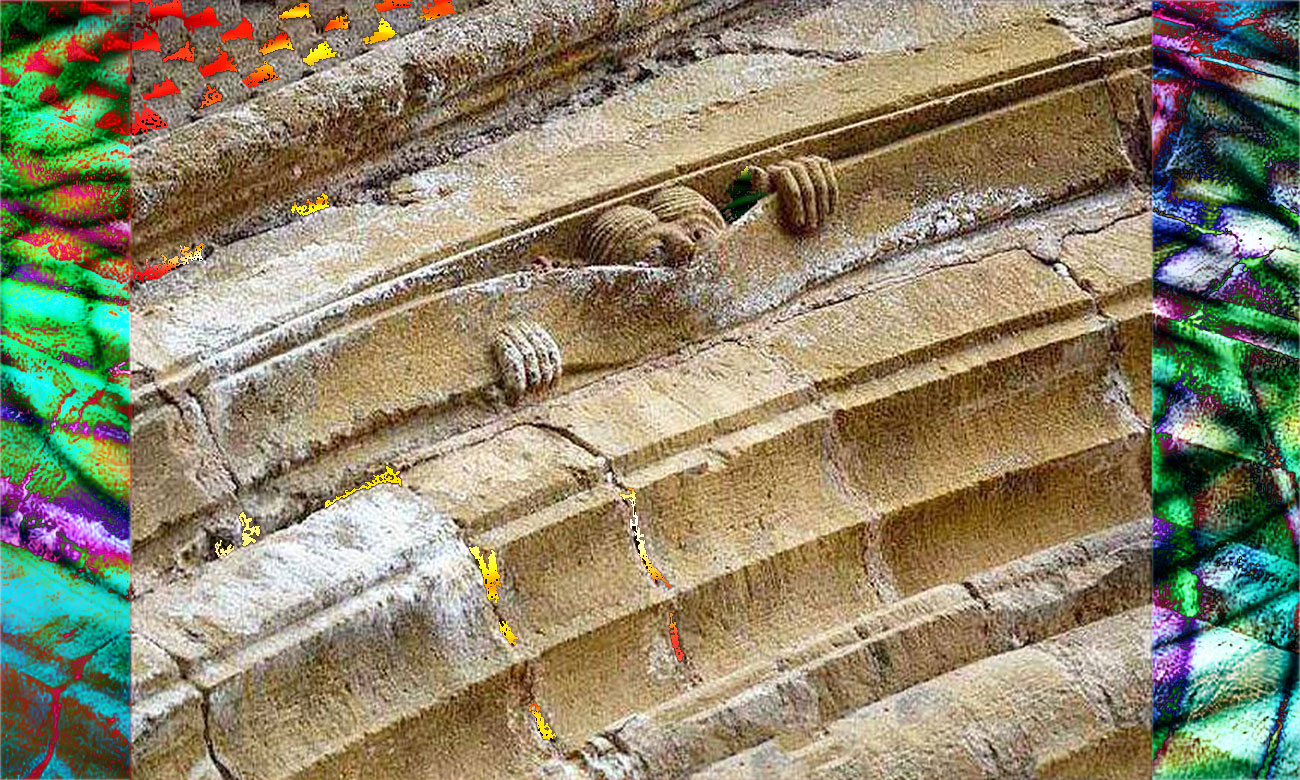
Since the year one thousand, and during two centuries, Europe got draped with a white mantle of chapels, churches and cathedrals. After a dark and brutal period about which little is known, all of a sudden light and abundance made the West bloom again.
The Emperor Popes
Following a very dark period – a great plague and its terrible ravages – the whole European economy managed until then by the powerful Roman empire is reduced to nothing. What will save Europe from a lasting stagnation is yet another initiative of Rome, wanted by the Pope who is in my opinion the direct heir of the Caesars and the emperor of the world.
Let us remember that the true Pope, founder of Christianity which he elevated to a state religion, was Emperor Constantine I, who ruled from his new capital Byzantium, renamed Constantinople, today Istanbul — ist ahn bull means in the language of the origins: she is the ancient bull. The Pope of Istanbul or Rome, as later that of Aix la Chapelle or Avignon, all popes are emperors. A basilica, the Christian building par excellence, comes from Basil, the Greek emperor.
The sacred order of the Templars depended directly on Rome and the Holy Father. The Templars are military men who constitute around the pope, true emperor of Christianity, an elite army with a dual vocation.
The Temple
The Order of the Temple is both the organizer of the crusades in the Holy Land and the master builder responsible for erecting new temples throughout Europe: cathedrals, basilicas, churches, chapels, priories, convents, hospitals, which are all relay stations and bank branches under the supervision of the grand master of the order.
The Templars also take care of roads, bridges and highways, works of art in all kinds, hostels for pilgrims, etc. These sacred constructions are all oriented towards — and dedicated to – the “new” religion. Which is not so new, moreover. Officially, it dates from the Christ Jesus, a recent invention modelled on mithraism. Unofficially, Christianity dates back to the dawn of time…
In short, a huge campaign of major works, with a sacred character, mobilizes the unemployed and revives the economy. Work for all, craftsmen without number, prowess everywhere. The towns, cities and countryside resound with blows of mallets, the clanging of iron against stone. On all routes, companions go from one shipyard to another, making their tour of France or even Europe.
The gendarmes are these famous monks-soldiers in cotte de mailles and surcot white crossed of red. Mounted on fast horses, the White Coats are the police of the road on the Roman roads and the tracks of the Orient. They also provide emergency services, accommodation for pilgrims and various banking services, in view of the enormous expenses of all these projects.

Unique Success Story
Yet, as their influence and fortune grew, the Temple Grand Master became the sole patron, relegating the pope to a subordinate position. Soon the Temple will become richer than the king of France, more powerful than all the armies of Europe, more influential than the bishops he sets up in the cathedrals he has built.
The secret of this brilliant success, unique in known history, is explained by the modernity and relevance of the approach. But nothing could have existed without the colossal fortune of the Temple, the world’s first bank, with exchange offices spread across Europe and the Middle East. Where did this immense fortune come from? Gifts from the faithful? Yes, for the greatest lords of Europe have converted to the Temple and bequeathed their fortune to it. But there is another, much less well-known source that does not appear in the history books.
La Rochelle, first Templar port of the first country in Europe. La Rochelle, towards which converged all the Templars. La Rochelle, the gate of the Americas to the silver mines, the silver of the Temple, silver and not gold, since the Templars our country is the only one who says money to designate currency and notes, silver when all others say gold. You are buzzing? Read this.
The Sacred Streams
Money is the nerve of war, however. The Templars’ recipe for success lies in their mastery of sacred construction. What is it? The rotation of the earth produces on its surface an energetic grid, the Hartmann networks, and vast energetic currents, the sacred flows.
A perfect knowledge of these subtle energies has once enabled the fellow builders to erect monuments virgin of all harmfulness. They had found that the cosmo-telluric activity generates harmful residues, a mesh which engulfs us in the matter, real net trapper. The builders of the Middle Ages have enlarged the net. According to Jacques Bonvin in his book Roman Churches, places of energy, these energies were treated in two different ways, which are called the Romanesque style and the Gothic style.
Let the word “style” not confuse the reader: the difference between Romanesque and Gothic is not limited to architectural or aesthetic peculiarities; it is the treatment of geo-energy that is different. In the Romanesque churches, the Hou networks Hartmann are pushed back into the thickness of the walls; thus the nave is purged. In the gothic cathedrals, the networks are sucked by the vault and crumbled by lights: rosettes, sculptures, capitals or gargoyles. In both cases, the faithful are protected from all harm.

Romanesque or Gothic Art
Often, novels and gothic have been involved in the realization of some major buildings. The Goths invented the ogive and cross-bow which allowed them to climb the vault of the nave higher and higher. But the Goths have not studied the caves and crypts, vaults under the terrible tension of thousands of tons of stone they support. They left this specialty to the Romanesques.
 Thus, even in the Gothic cathedrals, all crypts are Romanesque. The vault, by the tension of the stones it supports, is the magical place par excellence. The common language has kept track of it: when someone is under influence, do not we say that he is bewitched?
Thus, even in the Gothic cathedrals, all crypts are Romanesque. The vault, by the tension of the stones it supports, is the magical place par excellence. The common language has kept track of it: when someone is under influence, do not we say that he is bewitched?
The builders of cathedrals, to get rid of natural noxiousness and create conditions conducive to spiritual elevation, have imagined Faraday cages, where bright stones capture harmful radiation. Why stones alive? Because they are energetically alive, because they vibrate, and because they transmit with energy the information they have collected.
The polarized stones are images memories, but their function is above all to protect the nave from dangerous rays. In the sacred construction, the stones are of alternating polarity to transmit the vril, or continuous polarity to dilute it. Each architectural element has its own geobiological function. Nothing is purely decorative.
This art has suddenly appeared on our western land from the 11th century. But where did it come from? As we said, from very far back. It came from the megalithic builders. Those who raised dolmens, pyramids and walls of cyclopean. The former gods. The Atlanteans.
Medieval masons knew this so well that they carefully built churches and cathedrals on high places of megalithic. Thus, Notre-Dame du Puy or Notre-Dame de Chartres are built on dolmens. As most cathedrals…
Who has awakened this lost knowledge?
More than others, these places are conducive to spiritual elevation. And this, apart from any religious consideration, through the combined action of architecture and cosmo-telluric waves. It is interesting to note that while the Romanesque builders, with their semicircular arches, are the direct heirs of the Roman builders, they have never succeeded, as I said above, in building functional temples in terms of geobiology, or in terms of sacred, since the two areas are largely overlapping.
How is it that the sacred building suddenly appear, in the 11th century, without visible origin? Why, suddenly, after centuries of apparent barbarism, architecture is reborn both in the south with Romanesque art, and in the north with Germanic Roman art? Everything happens as if there had been a gap in time…
Let’s say a hole in space.

And everything happens as if a precious help, largely ignored by historians, had allowed this wonderful renewal. An aid known only to the Templars. They are indeed the only ones who knew it for what it really was: from elsewhere. Coming from afar.
This aid is that of aliens rescued from a space shipwreck. So are the Jacques, also called the Cagots.
Templars and Cathedrals
- The Templars
- The Stars of Compostela
- The Curse of the Templar
- The Right To Kill
- The Spring of Cathedrals
- Sacred Building
- Gothic And Romanesque Art
- Pagan Cathedrals
- The Labyrinth Of Tintagel
- The Jacques or Cagots
- Tables Of Chartres
- The Templars’ Treasure
- Libera Me
- Cathedrals On Strike
- The Passant du Devoir



